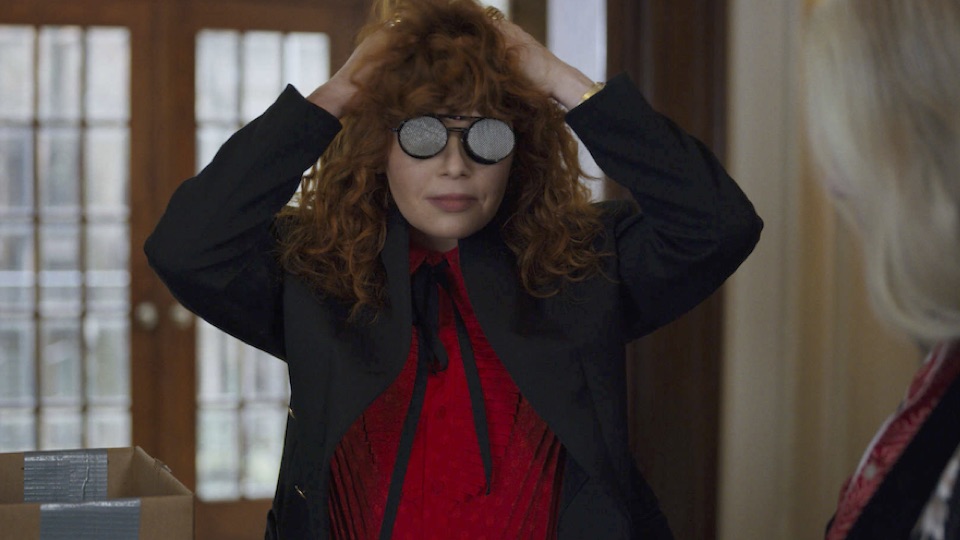In the month or so since Natasha Lyonne’s 8-episode series Russian Doll dropped on Netflix, much has been said and/or written about it, including by Lyonne and co-creator Amy Poehler as they made the rounds on the chat-show circuit. The semi-autobiographical show about a mid-30s New Yorker in the midst of an existential crisis is receiving well-deserved plaudits for its whip-smart dialogue and layered storyline. If you haven’t seen it—and I suppose it’s possible, given the plethora of other entertainment options out there—here are five reasons why this one merits your attention.
[WARNING: Spoilers below!]
Story, structure, and symbolism
Much has been made of the show’s structural similarity to the movie Groundhog Day, but Russian Doll doesn’t simply mine the “caught-in-a-loop” gimmick for laughs (though there are plenty in the show—see below). The whodunit—or “whydidit”—is enhanced by cleverly constructed intersections between the two main characters’ storylines, i.e. people and things from Nadia’s (Lyonne) life appear in Alan’s (Charlie Bennet), too. These inverses are clues to help solve the mystery at the show’s core; for viewers, spotting the Easter eggs that tie the two together is half the fun. The show’s title, too, helps partially answer the “why.” (Hint: Russian nesting dolls are called “Matryoshka” in Russian, a word that has “mother” built into it).
“Every detail has a purpose”
Related: “Netflix Gets In the Ring with the Gorgeous Ladies of Wrestling”
Music to my ears
Russian Doll’s soundtrack is worthy of the saga of a 36-year old celebrating her Birthday in a bizarre death loop with a handful of hip and quirky friends. “Morning After,” a song by Ariel Pink and Weyes Blood that appears in Episode 1, has a warped sensibility and lyrics (“free from the pain of changing, I’ll never be the same”) that seem tailor-made for the trippy narrative. Lots of shows have songs that perfectly underscore screen moments, but Russian Doll goes further than most. Harry Nilsson’s “Gotta Get Up” is used not merely as sonic window dressing but as a key reset device, playing in the background of the party as Nadia begins each life-death cycle (Alan’s reset queue is a Beethoven piano concerto). Lyonne and director/ co-creator Leslye Headland knew they wanted a song that not only fit the theme of the show but one the audience wouldn’t mind hearing repeatedly. Nilsson’s “Gotta Get Up” does the job well.
“Gotta Get Up”
Past as prologue
Just as “Gotta Get Up,” about an aging party animal’s inability to leave the nightly celebration, takes on a bittersweet quality knowing its composer died at 52 of heart failure, likely caused by a life of heavy drinking and drug use, Russian Doll seems a bit more poignant considering Lyonne’s real-life struggles: parental estrangement, battles with addiction and a near life-ending stint in hospital in 2005. The 39-year old writer, producer, and actress (Slums of Beverly Hills, American Pie, Orange is The New Black) hasn’t been shy about the fact that the parallels between the show and her real life go well beyond its NYC setting. While we’re on that topic …
New York as a character
Auteurs have tried to capture NYC’s many sides on small and big screens with varying degrees of success—from Seinfeld, Friends, and Sex in the City to King of New York and Manhattan (just to name a few.) Then there are shows like recent psychological thriller You (also on Netflix) in which The Big Apple is depicted as some idealized approximation dreamed up by outsiders. Lyonne, on the other hand, shot Russian Doll where she lives—in and around NYC’s East Village. And like the smell of $1 pizza mingling with the pungent odor of urine on the F Train the show has the whiff of authenticity. The diner scenes, for instance, were shot at Odessa, a diner in Alphabet City where this writer spent many a late night enjoying blini and copiously-poured glasses of cheap red wine. It’s the kinda place you’d expect to see and hear Lyonne’s “Nadia” holding forth in her wisecracking, noir detective patter.
[Natasha Lyonne talks New York as Character with Seth Myers]Sharp as a tack, funny as a heart attack
Russian Doll’s all-female writing and directing team gets inside the heads, hearts, and libidos of female characters in a way that is both refreshingly honest and hilarious. Case in point, an early scene in which Nadia chats with best friend and party host Maxine and Max’s girlfriend Lizzy:
Nadia (to Lizzy): Do ladies have midlife crises?
Lizzy: Why, because I’m dating a younger woman?
[Nadia and Max simultaneously]
Younger? Dating?
Lizzy (mildly annoyed): Fine, ****ing a 22-year-old.
Nadia (about Max): Does she know what 9/11 is?
Lizzy: Does anyone? Aren’t you a little young for a midlife crisis?
Nadia: I mean I smoke like, what, two packs a day? I have the internal organs of a man twice my age. If I make it to my low 70s, I’ll be shocked.
It’s a brief but funny exchange that helps establish not only the Lizzy/ Max dynamic but also Nadia’s general world view. The deft, witty dialogue that nevertheless sounds like real people inter-acting sets the tone right from the start: conversation crackles with life even as those engaging in it struggle with mortality.
-Colm Clark
Photo: Natasha Lyonne in “Russian Doll,” via Netflix





0 comments on “5 Intriguing Reasons to Watch “Russian Doll””